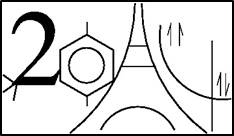Amines and imines are important for prebiotic chemistry as amino acids and their derivatives form a large part of the basic blocks of the living organisms. Yet, only one amine (CH3N=H2) and two imines (CH2=NH and CH3CH=NH) have been observed in the interstellar medium (ISM). Numerous questions remain unsettled in the interstellar nitrogen chemistry contrary to the interstellar oxygen chemistry that is well documented. The hydrogenation of carbon monoxide into methanol has been studied experimentally and all stable intermediates, together with some transient species, have been observed in the ISM and/or in the laboratory. Theoretical approaches have also been reported recently.
By analogy with the formation of methanol, the formation of methylamine is proposed to follow an hydrogenation mechanism starting from HC≡N (isoelectronic of CO) through CH2=NH (isoelectronic of H2CO). In this line, CH3C≡N and CH3N≡C identified in the ISM could be the potential fathers of primary CH3CH2NH2 and secondary CH3NHCH3 amines, respectively.
However, when embedded in the grains ice mantles, these amines are at the same time subject to hydrogen abstractions by the OH radicals generated by irradiation of the ice, with formation of H2O at each step of the dehydrogenation process. Globally, one has a two-way network:
CH3C≡N ⇆ CH3CH=NH ⇆ CH3CH2NH2 and CH3N≡C ⇆ CH3N=CH2 ⇆ CH3NHCH3
A large survey of the reaction possibilities was first performed at the MP2/aug-cc-pVTZ level of theory. Then the energetics of the significant reaction schemes (reaction enthalpies and activation barriers) were refined at higher levels (CCSD and CCSD(T)). Reactions in the gas phase and embedded in the ice were considered. In the end, it is shown that these nitrogen compounds can hardly survive in the ISM. It is rather disappointing for prebiotic chemistry but consistent with the observation of only one such species with low abundance.

 PDF version
PDF version
